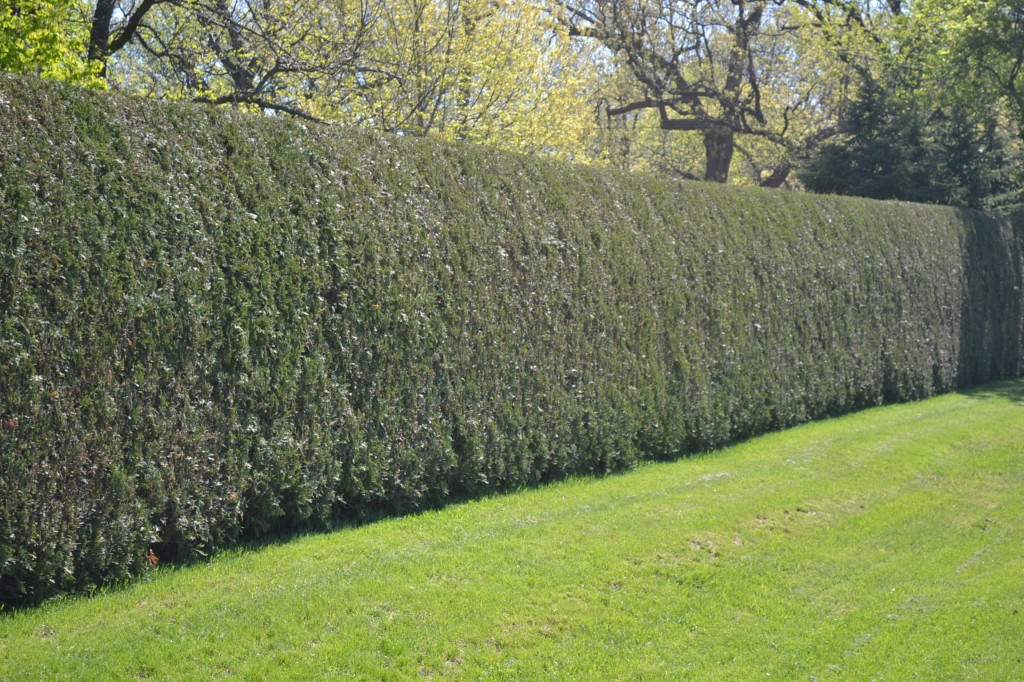Overgrown shrubs and trees can cover the beauty of your home or business. Overgrown plant material can damage siding, shingles and other parts of your property. It is essential to install plant material in locations that will not negatively impact your property. If you are the unlucky benefactor of improper landscape installation, don’t worry there is still help for your property. Start by identifying all of the plant material on your property.
Once you have identified the plant material, you need to determine when the best time to prune is. Generally speaking, early bloomers should be pruned immediately following the last blooms, before new buds are present. Do not prune these plants before they bloom in the spring or while they are flowering as this may cut down on the quality and amount of blooms that the plant yields. Summer bloomers should be trimmed following the last blooms before new buds are present. Evergreens should be pruned after the new spring growth. Depending on the hedge variety, most hedges should receive at least one strong spring pruning and then periodic pruning throughout the growing season. Proper shrub pruning can also stimulate new growth in your plants.
Winter Pruning
Winter shrub trimming should be performed on most types of plant material. One of the main reasons why winter shrub trimming works so well is because the primary structure of the plant is exposed. Pruning overgrown or older shrubs works best in the winter. If you are performing a drastic pruning, winter is the best time to do this. Severe pruning includes any pruning that removes over 1/3 of the plant’s growth at one time. The plant will have a better chance of survival if the pruning is done in the winter. Doing this type of pruning in the summer will increase the chances for failure. The increased heat stress and potentially lower moisture available will also stress the plant.
Deciduous shrubs drop their foliage in the fall, leaving an exposed plant. Having the plant exposed during winter shrub trimming will allow you to see the shape of the plant better, determine what parts of the plant require trimming and identify any damaged part of the plant. You may be able to see cross branches that are rubbing on each other. The rubbing will lead to a removal of bark and expose the plant to infection or disease. Being able to see and adequately shape your plant can help restore a lost form or train a new shrub in the correct growing habits. Another reason why winter shrub trimming is beneficial is that the plant is dormant. Having a dormant plant will reduce the stress placed on a plant during pruning. The plant will not be actively growing, and it will not be using its energy to produce foliage.
Proper Pruning
Proper shrub pruning not only beautifies your plants, but it can improve their health. Simple techniques can dramatically improve the curb appeal of your property. The first thing that people notice when they go to your house or business is the exterior appearance. From a manicured lawn to the uniformity of the landscape plant material, anything that you can do to improve the curb appeal of your property will make it more inviting to guests. Most property owners do not understand the importance of proper shrub pruning on an annual basis. Taking the time at least once a year to inspect your plant material will save you money in the long run. Proper shrub trimming includes cutting out all dead or damaged branches. Adequate shrub pruning should also take into consideration how much plant material to remove at one given time.
Shrub pruning categories:
Early Bloomers- Plants that bloom before mid-May.
Summer Bloomers- Plants that bloom after mid-May.
Evergreens- Plants that have needles.
Hedges- Rows of like plant material that grow into each other to form one plant.


